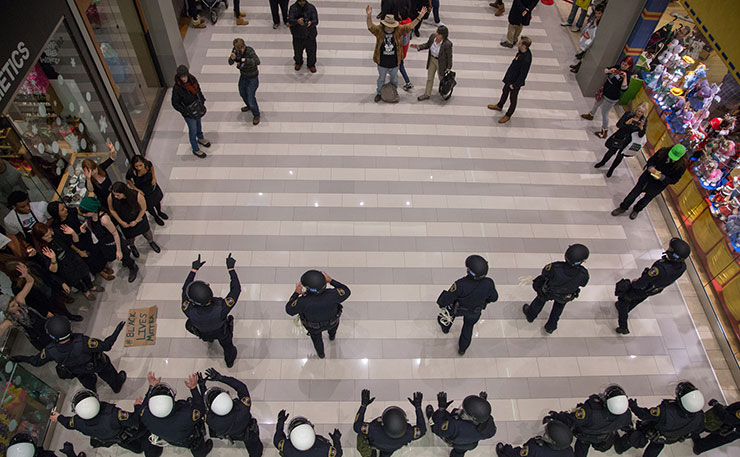America isn’t the only nation with a need for a #blacklivesmatter movement, writes Tamar Hopkins.
The United States of America is in the grips of a crisis. It’s not a new crisis. But every 16 hours, it becomes lethal for America’s black and brown communities. This crisis is also one that grips Australia – not on the same scale – but with the same lethal effects.
In recent years, Australia’s crisis has killed Mulrunji Doomagee, Mr Ward, Mark Mason, Paul Carter, Colin Sansbury, Andrea Pickett, Julieka Dhu, Maureen Mandijarra … the list goes on…relentlessly.
A recent review by the Australian Institute of Criminology has found that there has been a substantial increase in the numbers of Aboriginal people dying in custody in the last five years. If we added the number of Indigenous women killed following failures by police to protect them from family violence, the numbers of criminal justice related deaths would be higher still.
In both Australia and the US, black deaths in custody are the most visible side of the emergency. However, the more prevalent face of this crisis is the stark over-incarceration of black and brown people.
In Australia, 27 per cent of prisoners are Indigenous, while constituting only two per cent of the total population. In the US, 60 per cent of the prison population is African American, while only making up only 12.5 per cent of the population.
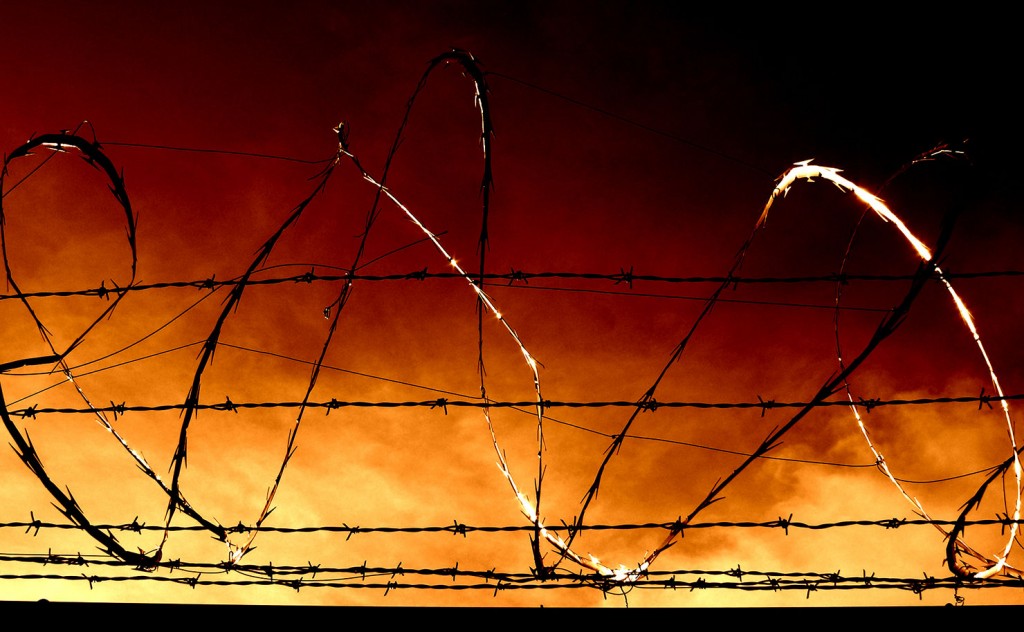
This means that Australia has a far greater rate of over-representation of Indigenous prisoners than the US rate for African Americans.
Another stark indicator of the crisis is the intractable fact that police stop black and brown people, without reasonable suspicion, far more frequently than whites.
Statistics from Flemington, Victoria revealed in 2013, showed that Africans were 2.4 times more likely than whites to be stopped by police without a further policing outcome (ie. they were innocent of any crime).
In New York in 2013, 89 per cent of people stopped by police were black or Latino. 88 per cent of those stopped did not have a further policing outcome.
When black and brown people are the victims of crime however, they are under policed, in both the US and Australia. Australian Aboriginal woman Andrea Pickett’s death reveals that under-policing can also be lethal.
Racial profiling’s deadly consequences
On July 13, 2015 African American woman Sandra Bland was stopped for a minor traffic violation in Texas. She was subsequently assaulted and threatened during what appears to be an unlawful arrest. Three days later Sandra was found dead in her cell.
Footage of Sandra’s arrest from the dash-camera of a police vehicle and from a passer-by indicates that the arrest did not have a lawful basis, and that the officer’s decision to demand she leave the car and his threat to taser her were without reasonable justification.
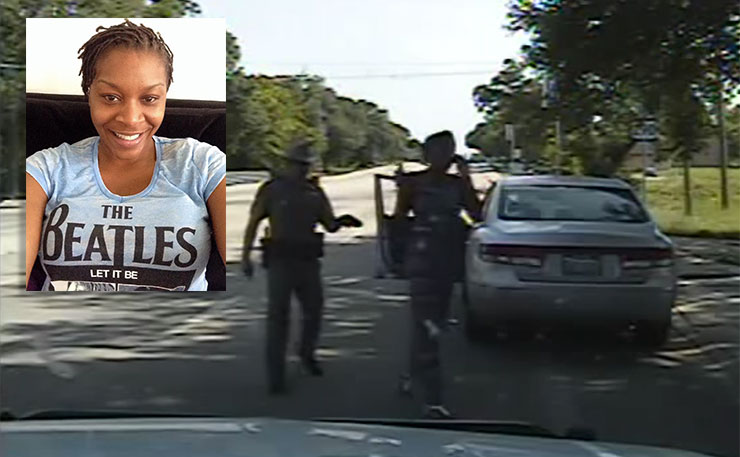
Sandra had refused to put out a cigarette she was smoking while in her car. The officer viewed Sandra’s (lawful) defiance of his unenforceable demand as grounds for arrest.
This example shows the intersection of white supremacy and patriarchy with an institutional conceit that the exercise of police power is always justifiable. How could he have acted this way in front of a camera if not for the understanding that any behaviour it revealed would viewed as acceptable by his superiors?
Sandra’s death a few days after arrest was not isolated. In July 2015, five African America women were found dead in police custody.
In Australia, the daily criminal justice emergency facing black and brown people barely registers with the public. While racism directed at Adam Goodes, an Aboriginal football player, gained much public attention, and the concern that the Australian Border Force planned to racially profile Melbournians on the 28 August 2015 drew more than 200 protesters and mass media attention, the daily emergency is largely unknown. The relatively unknown death of Julieka Dhu on August 4, 2014 is one example.
As Amy McQuire writes for New Matilda: “A 22-year-old Yamitji woman died in custody after being jailed in South Hedland for $1,000 in unpaid fines. [Julieka] had committed no crime. Twice in the lead up to her death the young woman was transported to South Hedland Health Campus in a police car, not an ambulance, but was sent back both times. On the third occasion she passed away, and in the process became a number – the 339th Aboriginal death in custody in the two decades since a Royal Commission delivered the same number of recommendations – 339 – the vast majority of them never implemented.”
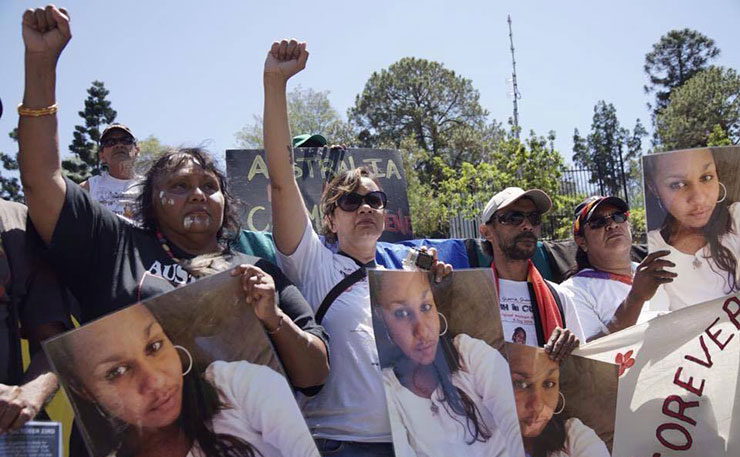
The 339 Aboriginal Deaths in custody since the Royal Commission are largely invisible to the Australian public.
In the US however there is something profoundly different going on. The daily deaths and institutional racism inherent in the US criminal justice system have become front and centre stage. Indeed The Guardian has called it, “The birth of a new civil rights movement.”
Is there anything Australians can learn from this movement to make the emergency facing black and brown people in Australia more central to political decision-making?
Tactics of the #BlackLivesMatter Movement
On July 18, 2015 activists from the #BlackLivesMatter movement shut down the speeches of two progressive presidential candidates, Governor Martin O’Malley and Senator Bernie Sanders and demanded that they acknowledge and respond to the fact that black people in the US are facing an emergency over deaths in police custody.
The shut down occurred at a Netroots Nation Conference in Phoenix, Arizona.
Netroots Nation brings together much of the mainstream progressive movement in the USA. Activists asked the speakers, “As leader of this country will you advance an agenda that will dismantle structural racism in this country?”
Governor O’Malley’s immediate response was “Black Lives Matter, White Lives Matter, All Lives Matter.”
This completely missed the racialised nature of the criminal justice crisis. Senator Sanders immediate response was “Jobs.” Sanders’ response also completely missed the point: lethal police violence kills black and brown people regardless of their employment status.

In the weeks that followed, both presidential candidates produced extensive policy responses to address the issues raised by #BlackLivesMatter. (Sanders, O’Malley). Consequently, as a political strategy, the “Shut it Down” tactic used by #BlackLivesMatter in this example was extremely effective. However the effectiveness of the tactic was broader than this.
At the Netroots conference, many of the audience members were hostile towards the protest saying, “Shhhh, let him speak, you’ve had your say”. It was reported that some of the audience actually tried to physically restrain the protesters. Text messages posted on the conference app revealed the heightened emotional state of the conference participants towards the action.
From discussions held straight after the protest by some of the protesters and then by a panel entitled: Creative Disruptions: Culture jamming, subversive actions and media tactics for a 2.0 world it was clear that protest had actually transformed many Netroots participants. People went from being irritated and angry with the protesters, to having an “ah hah” moment.
The discussion allowed them to recognise why making lethal racist policing central to the conference was absolutely critical.
One panellist observed, “You need to make people uncomfortable to transform them. You know you are speaking truth to power when you can feel the knots in your stomach. The tactic is about taking a particular issue and making it the issue that has to be dealt with.”
A further panellist observed “This action exposed structural racism in the [progressive]movement.”
Another panellist observed, “Often hierarchical white places are not spaces where transformational change can happen. We need organisations that can harness moments in real time. Most professional progressive organisations can’t do this.”
Along with shutting down the presidential speakers, #BlackLivesMatter activists subverted the Netroots Nation Twitter hashtag. Consequently anyone searching for information on Twitter for Netroots Nation : #NN15 would also find #Ifidieinpolicecustody, #sayhername and #SandraBland.
Each of these hashtags takes the searcher to the facts, information and research on black and brown deaths in police custody.
This strategy forced black deaths in custody into being a central issue for Netroots Nation – despite the concerns by #BlackLivesMatter that organisers had failed to do this at the outset. No-one will now mention Netroots Nation 15 without mentioning #BlackLivesMatter.
Who is the #BlackLivesMatter movement?
Very superficially, the roots of the #BlackLivesMatter movement lie in the hyper criminalisation of black people coupled with unchecked and unaccountable use of lethal and less than lethal force by police.
There is a profound history of activism against this violence. #BlackLivesMatter is the most recent manifestation of this history. #BlackLivesMatter is a movement lead largely by young queer women of colour. It is about seizing power now, using art, social media as well as collective and intersectional strategies.
It works with fear: both in the bravery of its organiser’s actions and in the scale of the catastrophe it is organising against.
Many participants are educated and organised. Many are becoming educated and learning how to organise through the movement itself. There are no single leaders, but women take leadership roles.
There are chapters across the US and in Toronto. While this is a new civil rights movement, none of how it operates or what it is saying is new. What is new is that social media allows activists to speak out clearly, personally, rapidly and with a far greater reach than ever before. An action can be organised in minutes: information and ideas move instantaneously.
But in addition to social media, there are now rapidly transmissible images of indefensible police shootings and examples of racial profiling that can be quickly dispersed showing the depth of the crisis facing America.
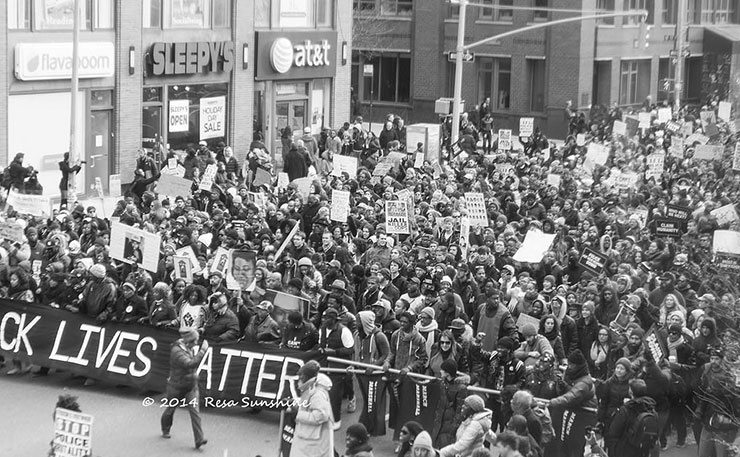
Established media is also assisting. For example, the Guardian is using its resources to count the daily deaths. Additionally, US activists have access to comprehensive research and data setting out for all to see, the profound inequities that exist in the criminal justice system.
Social media and activism allows this research to reach places and people who might never have seen it before.
Michelle Alexander draws on this research in her extraordinary book the New Jim Crow. A book like this could not be written in Australia. Not because we don’t have a criminalised underclass based on race, but because Australia has never, and doesn’t now, systematically collect and make public data that would reveal the racial bias in the police, judicial and custodial systems in Australia.
What are the demands of the #BlackLivesMatter movement?
As a collectivist movement, #BlackLivesMatter can have no single set of demands. However, various people within the movement have made critical suggestions.
Alicia Garzia, a #BlackLivesMatter founder and Domestic Worker Alliance organiser, calls for more resources to organise groups locally. She says it is critical that we act to support movements in their time of suppression.
This issue is beyond policing, it’s about racial justice. This movement, she says, is not just about stopping police from killing black people – it is about basic issues of survival such as housing and food. Garzia says we must acquire a deep understanding about how systemic racism operates at all levels in our communities.
Patrisse Cullors, another founding member and local organiser set out the following demands at a session at the 2015 Netroots Nation Conference:
- No more deaths in custody
- Civilian oversight and investigation of police;
- Police out of schools (end the school to prison pipeline);
- Divestment from police and investment into communities;
- De-militarisation;
- Emergency attention on this issue right now… not later.
- No body cameras; (ie this is an investment in police, we need strategies that divest).
When asked whether trust can be rebuilt between the police and African Americans she says: “Trust cannot be ‘rebuilt’ because it never was there in the first place.”
While Patrisse calls for greater police accountability, it is clear she is not talking about reform. She calls for a new paradigm, one where communities are prioritised and criminal justice mechanisms are replaced by new community-based systems of accountability.
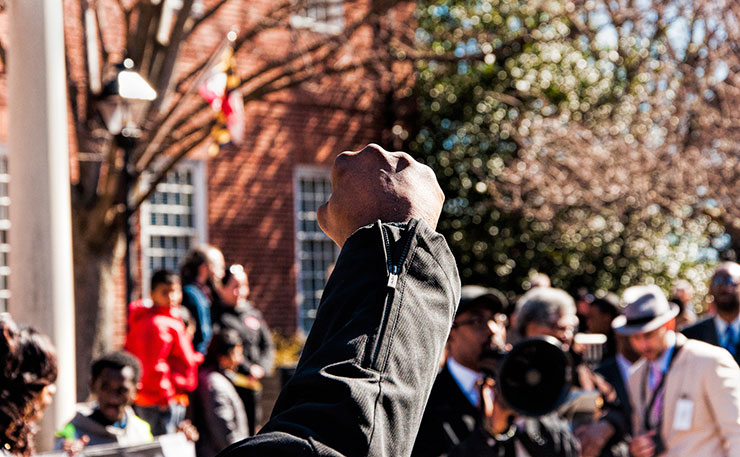
Deray McKesson a hugely influential Twitter-based activist reportedly behind the Campaign Zero website, takes a more reformist approach (according to the website, but not his tweets). The list of demands on Campaign Zero’s website include: role out of body cameras, independent investigation and prosecution of police.
Michelle Alexander, in her book The New Jim Crow, describes the need to dismantle the system of mass incarceration and its creation of an underclass that has no access to jobs, voting rights, housing, food-stamps or nursing homes on release. She demands the following:
- End to racial profiling and police discretion to stop and search black people without justification or in pretextual stops;
- End to post-carceration discrimination so that those exiting the system have a genuine chance to re-enter society;
- End to the black/crime stereotype;
- End to the war on drugs (and all that it entails);
Bryan Stevenson, a dedicated anti-death row activist and lawyer calls for (amongst other things) a genuine recognition of the injustices facing African Americans from the past. He describes the need for memorials where all lynchings/deaths/hangings of black people occurred (by police or vigilantes).
While this brief account fails to give justice to the insights of these extraordinary people, it touches on some lessons we must bring home to Australia.
Learning the lessons: What are (some of) the demands we could be making in Australia?
Australia faces huge challenges in confronting racism in its criminal justice system. Actual and implicit bias impacts decision-making processes at all levels, particularly by police. There are key demands we should be making of our governments that reflect the demands of US activists. For example:
- The independent investigation and prosecution of police;
- Legislation that eliminates the opportunity for racial bias to operate. For example, all random, suspicion-less stops should be prohibited. Furthermore all discretionary policing decisions – such as those to stop, charge or caution a person must be subject to clearly defined, evidence-based and enforceable criteria;
- Legislation that addresses systemic bias in law enforcement. We must measure patterns and practices to ensure a reduction in racial profiling, not just the existence of policies;
- Collection of statistics on the race and basis of all stops and searches (vehicle and otherwise) as well as other indicators that explore the presence of bias;
- Acknowledgement and recognition of the historical injustices experienced by Aboriginal Australians. For example we should consider marking with a monument the site where each Aboriginal person who died as a consequence of invasion and colonisation was killed;
- Crime caused by poverty, homelessness etc. needs to be decriminalised and a concerted effort needs to be put into equalising the conditions people live in, through the adequate funding of housing, education, health care and employment for people in the places they need it (Justice reinvestment);
- A shift towards community control of accountability systems.
The realisation of these demands will not take place in a vacuum. #BlackLivesMatter activists and Michelle Alexander argue that a movement for change is critical for real change.
Furthermore it must not be co-opted by professional groups making deals with the powerful. Alexander and Klein both argue that the reason the American civil rights movement failed to achieve actual equality is the reforms did not change the conditions that led to inequity.
Indeed, concessions that professional groups achieved silenced and undermined the movement’s demand for deep structural change.
The conclusion to draw is that we must listen to those experiencing racial injustice, not the institutions that inflict injustice upon them, in evaluating whether outcomes have been achieved.
How do we build a #BlackLivesMatter movement in Australia?
We know that change is necessary. What Australia lacks is a sufficiently effective movement demanding this change. Some of the reasons regularly suggested for why the movement isn’t effective in Australia is that there are fewer people vulnerable to racial injustice than in the US; the rate of lethal state violence in Australia is lower than the US; and that historical differences between the US and Australia mean that race is less important in Australia.
However there are a number of factors that point to race being as important an influence on injustice in Australia as in the US – perhaps an even more important influence.
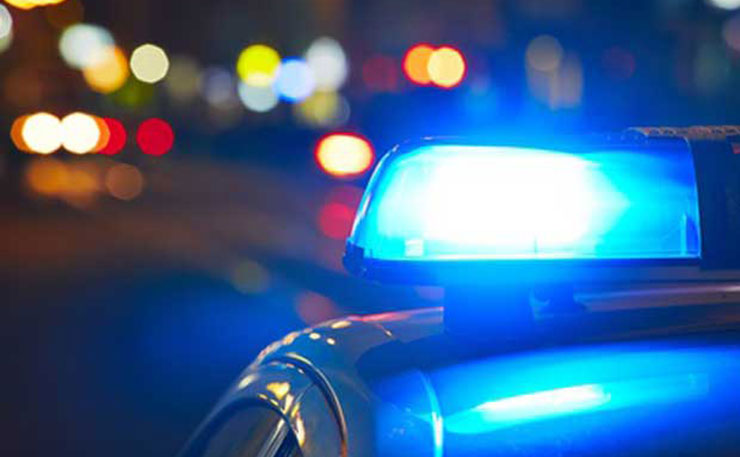
Many argue that a pervasive silence hides the enormous and institutionally embedded racism in Australia. Furthermore our governments fail to require police, courts and prisons to collect accessible data that could be used by researchers to explore the true extent of racial biases within our legal system.
Where data exists, we see the sheer scale of incarceration rates of Indigenous people, we see evidence of racial profiling, we see the increasing rates of Indigenous deaths in custody and we see the appalling treatment of people seeking asylum.
The power of #BlackLivesMatter comes from it being a movement organised (lead) by those experiencing racial injustice and supported by those who recognise the injustice they face.
People of colour must be in positions of leadership in this work, with others supporting their demands. These leaders need to be nurtured, educated, empowered and resourced to be effective.
US organisations like the Black Organizing Project, Dream Defenders and the Domestic Workers Alliance provide good examples for how this can be done.
In Melbourne the movement is growing: we have Imara, In Our Own Words, RISE, WAR, Still Nomads and many others.
What #BlackLivesMatter shows is that a movement can maintain its focus on the people impacted by discriminatory policing, while engaging all parts of the progressive movement to build political influence.
Donate To New Matilda
New Matilda is a small, independent media outlet. We survive through reader contributions, and never losing a lawsuit. If you got something from this article, giving something back helps us to continue speaking truth to power. Every little bit counts.

